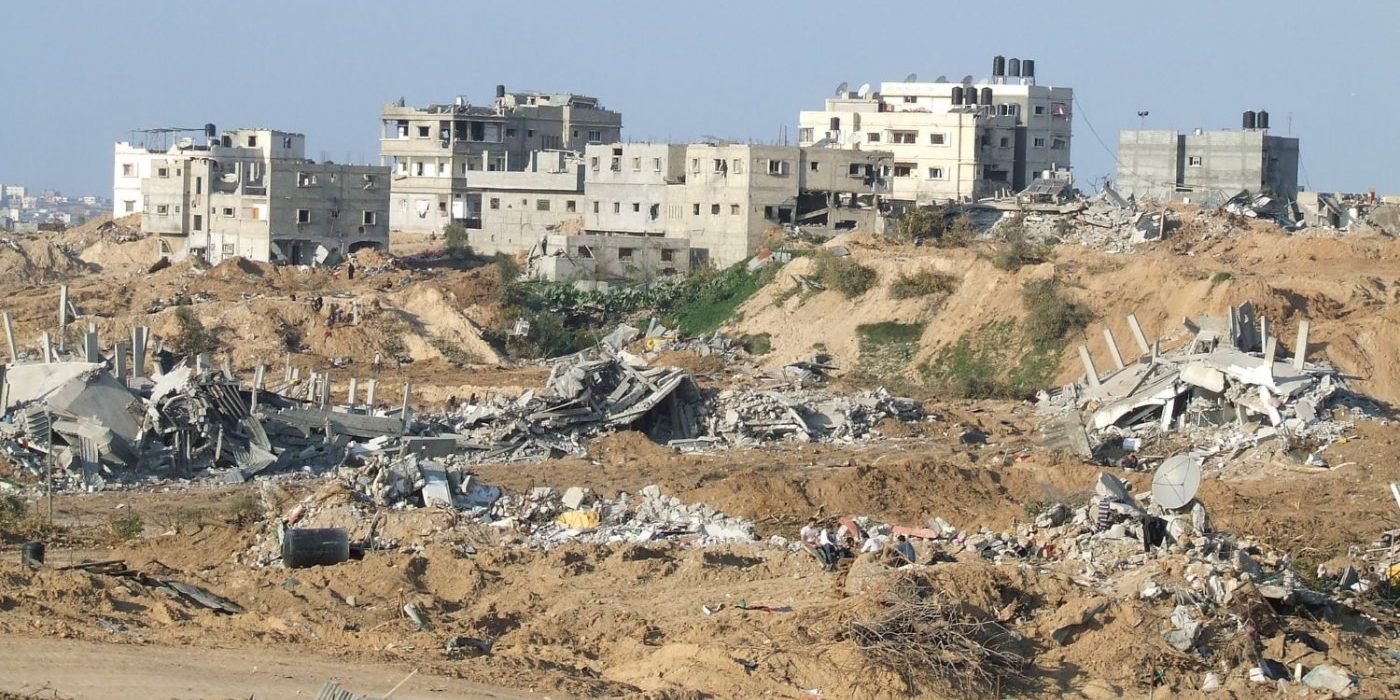The hidden cost of ‘defence’: Military conflict and eco-violence
On Wednesday 26 March, Chancellor Rachel Reeves unveiled the government’s Spring Statement. In the face of growing “global uncertainty”, Reeves promised an increase in defence spending to 2.5% of the GDP from April 2027.
The decision to ramp up defence spending is framed throughout Reeves’ statement as a way to procure “security” for citizens. And indeed, tensions have been rising around the globe in recent years, so preparing for potential conflict at first glance is an understandable move. But there is much beyond the surface of simply “defence”.
This decision to pour funds into defence does not only concern the nation’s “security”, but the arms industry as a whole, and it seems clear that the new Labour government intends to reap the lucrative benefits that investing in the industry brings.
80% of Gaza’s trees have disappeared, and 2/3 of farmland has been strategically destroyed by Israeli bombardment and military activity
The Chancellor has promised to turn the UK into a “defence industrial superpower”. Under this new plan, the UK Export Finance will also receive £2 billion to loan out to buyers of UK defence products, most notably overseas buyers. What is worth keeping in mind, however, is the UK’s fantastic track record of willingly licensing arms exports to be used in campaigns of humanitarian violence.
In 2019, the charity CAAT took the government to court for their licensing of arms sales for Saudi Arabian usage in the bombing of Yemen, despite having clear knowledge of the possible humanitarian cost that such a decision would bring. Yet somehow, as of 2024, the total value of exports to Saudi Arabia has amounted to £29.4 billion since the start of the war.
Meanwhile, since 2015, military exports to Israel have rounded up to a total of £500 million, sold under licence by the UK government. And despite the government’s decision to limit arms sale licences due to “clear risk” of the weapons being used in violation of international humanitarian law, hundreds of arms licences are still left unbanned.
The UK continues to supply the ongoing genocide in Gaza with parts used to construct the combat aircraft F35. Our university is similarly complicit in this destruction through its partnership with Rolls-Royce, who are involved in the development of F35 parts.
But besides the humanitarian destruction that is central to the arms industry, what is less widely discussed is the environmental violence that also lies at its core.
Satellite imagery from Gaza potently highlights the violence that arms can cause against the earth. As reported by Yale School of the Environment, 80% of Gaza’s trees have disappeared, and 2/3 of farmland has been strategically destroyed by Israeli bombardment and military activity. The loss of vegetation has put the area at risk of long-term desertification, further threatening water instability which is crucial to the population’s survival. Waterworks and sewage infrastructure have been badly destroyed, leading to at least 100,000 cubic meters of raw sewage and wastewater free-flowing into the land and the Mediterranean sea on a daily basis.
Investing in defence now might run the risk of “locking in” carbon-intensive military equipment
Such visible environmental violence can also be traced to the upturning of ecosystems and pollution of water sources found in the mining industry. Relying heavily on metals and other such materials, the arms trade undoubtedly demands large scale resource extraction to construct their technologies. The government’s decision to “revolutionise” the UK military will further funnel funds into the mining industry around the globe. As reported by the War Resisters International, the next generation of the UK’s defence hardware weighs at least 514,270 tonnes in raw materials, showcasing the extent of its consumption and environmental cost.
Putting aside the impact created by warfighting, the world’s military contributes to 5.5% of global greenhouse gas emissions, with a carbon footprint that overtakes that of Russia. With military decarbonisation in its “infancy”, Ellie Kinney notes how investing in defence now might run the risk of “locking in” carbon-intensive military equipment, failing to address the climate problems that will only intensify.
Thus Reeves’ announcement that the UK will boost military investment – at the cost of cutting overseas aid to just 0.3% of Gross National Income – is as much a humanitarian concern as it is an environmental one. Her language justifying this decision as one of “security” and reactionary self-preservation is highly dubious, and I cannot help but recall David Lammy’s speech validating the new Labour government’s decision to continue supplying Israel’s genocidal activities under the duplicitous justification of “defence”.
As O’Hara aptly states: “there is no legal definition of what constitutes an offensive weapon and what is a defensive weapon”, and the defence industry of the UK has proven to be far from protective of both people and the earth that we share. Our support of a government should not be used to justify the shedding of innocent blood.

Comments